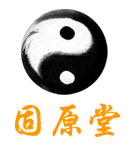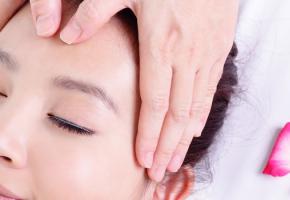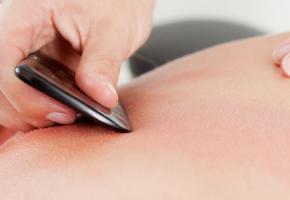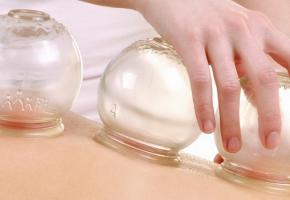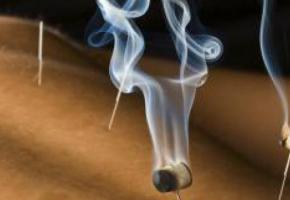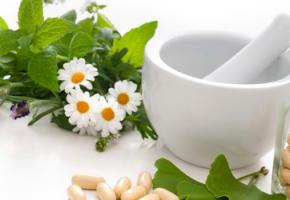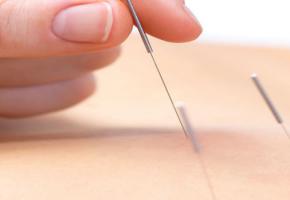Channels and Collaterals or “JING LUO” in Chinese are pathways that transport Qi and Blood, and connect the internal Zang-Fu Organs with the surface and other parts of the body. “JING” originally means “ longitudinal line” and translated as “Channel” or “ meridian” which has meaning of path or straight in. Channels” are the main components of the channel systems, and travel at a relatively deeper level and connect the entire body from both the interior to the exterior in an upward-downward fashion. “LUO” means “ network”, which is translated as “Collaterals” and refers to branches which are separated from channels and run superficially and transversely all over the body like a net.
Channel theory studies the pathway distribution, physiological functions, and physiological changes of the channels and collaterals and in the human body, as well as relationships with internal zang-fu organs. It is the foundation of acupuncture and moxibusion and remains as an important component in the basic theories of traditional Medicine (TCM). Moveover, the channel theory plays a significant role in the physiology and pathology of diseases and provides guidance in diagnosis and treatment etc. clinical practice of all subjects of TCM.
Gua Sha is a traditional Chinese medicine (TCM) therapy using a jade board scrape on the body to promote blood circulation and remove toxic heat, blood and lymph. From TCM point of view, our body needs a constant and 是vigorous movement of energy ("Qi") to keep us healthy and alive. But if there is a presence of toxins, "Sha" will be formed and caused congestion in the circulation. In Chines...e, "Gua" means scrape or rub over the skin, and “Gua Sha” means toxins are being brought to the surface by the rubbing (thus it restores and rebalances "Qi" circulation in the body).
If Gua Sha is performed on the body, as an aftermath, blood stasis in the subcutaneous tissue will be raised and brought out by Gua Sha shown as petechiae, which shall fade away in 2-5 days. Note that the petechiae is actually the “Sha” that causes the health issues.
Gua Sha is simple, scientific, effective and safe, as it has no side effects. It has been practiced for more than 25 centuries by Chinese people and is a precious heritage of TCM. Traditionally, Gua Sha can be performed when a patient has pain due to an acute or chronic disorder, or a knotty feeling in the muscles. However, nowadays, since more and more people are seeking effective and safe ways to make them look better and stay younger, Gua Sha is systematically developed and getting popular in China recently for medical cosmetology. This holistic beauty therapy can balance, restore and rejuvenate the skin condition without leaving any signs of petechiae, and without uses of chemical acids, microdermabrasion, Bottom drug injection or painful cosmetic surgery. It not only promotes blood and "Qi" circulation but also accelerates skin cell regeneration, improves skin absorption, and prevents aging.
The following effects will be seen immediately after Gua Sha therapy: reduced eye bags/puffiness; reduced fine lines/wrinkles; improved uneven tone; smoother and radiant skin; smaller pores; lightened freckles/dark spots; lifted and firmer skin; reduced double chin/refined face shape.
Essentially, Gua Sha therapy addresses underlying causes, like digestive problems, emotional stress, hormonal imbalance, which become reflected in the face through puffiness, dark circles around the eyes, dryness or dullness of the skin, sagging skin, drooping eyelids, blemishes, acne, fine and deep wrinkles, pigmentations. Gua Sha is performed by applying gentle scraping with some unique shaped jade boards and natural oil and cream on specific points, so that it is guaranteed that it is not painful and there is no petechiae or any red spots left on the face.
In Chinese Medicine theory, we are sick because our body loses the balance between "Yin" and "Yang". Four basic factors determine health and well being, they are: lifestyle, diet, exercise and mind. Diet is most important because diet is considered the primary cause of sickness as well as the main reason for longevity and healthy. We are sick because our body is not in balance. Traditional Chinese food therapy is a practice of healing using natural foods instead of medication. It is a modality of Traditional Chinese Medicine, also known as Chinese nutrition therapy.
Proper diet is a good medicine with treatment effect. Food can be used to adjust the imbalance of Yin and Yang. Learning dietetic therapy of Chinese Medicine is a good way to treat and prevent diseases. Cooking not only meets the needs to fill up the stomach, but also can become good medicine。
Traditional Chinese food therapy dates back as early as 2000 BC. Neighing, the "Yellow Emperor's Classic of Internal Medicine", written around 300 BC, was the most important in forming the basic theory of Chinese food therapy. It classified food into four "food groups", and "five tastes" by the natures and characteristics.
Food plays an important role in Chinese culture. Cooking good food for family members is a pride and duty for most women. Children are brought up with general knowledge of the nature of their daily foods. Dietary restriction is commonly understood and observed. Eating well and healthy is almost a national obsession and definitely the most valued activity of family life.
